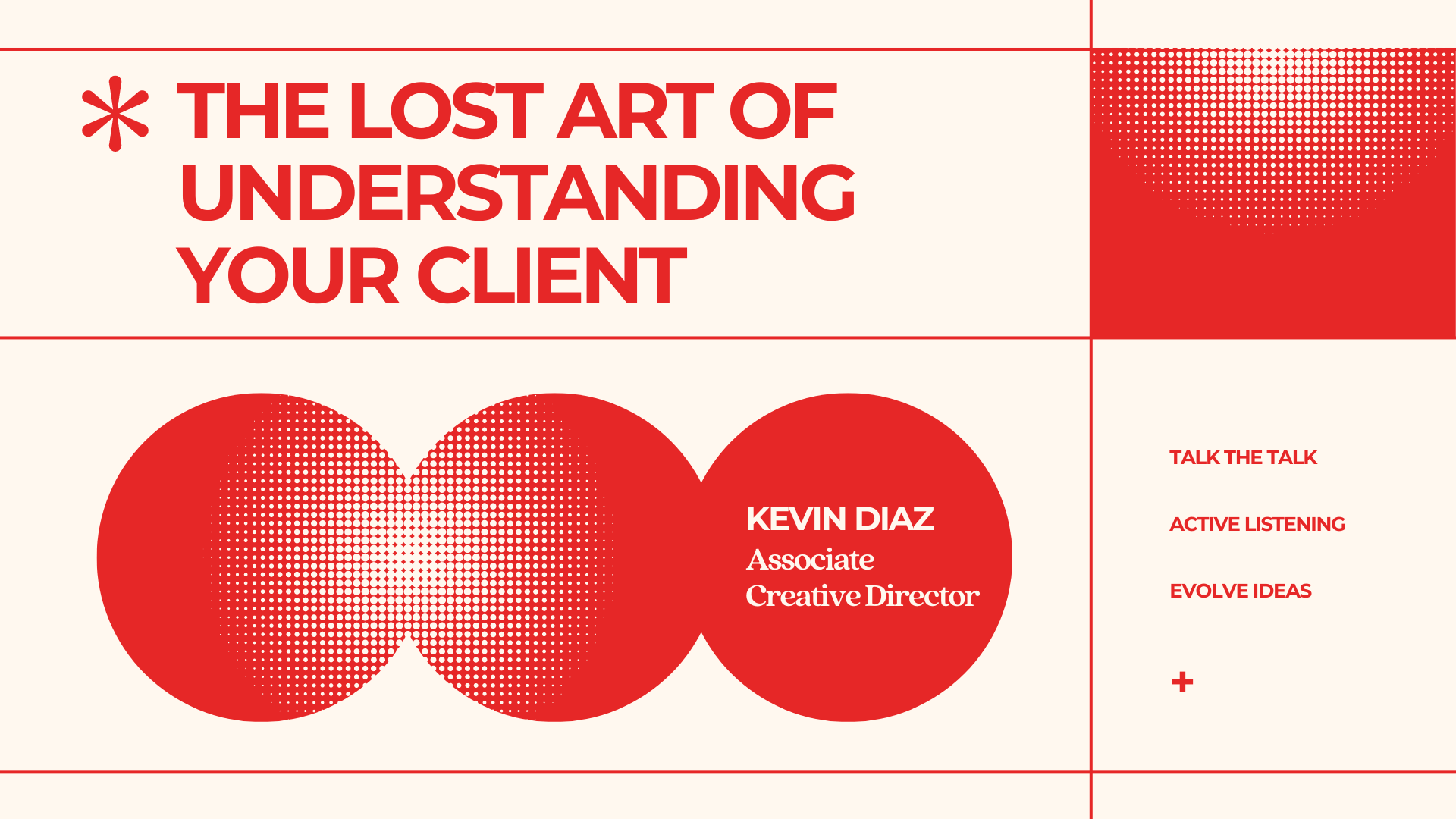
In today’s world, where numbers overshadow ideas, search words and hashtags are used to understand and explain a product or service, it becomes quite easy to lose the essence and soul of an idea. The passion behind building something can quickly become an automated process, lacking character, tone, and even losing sight not only of what one is creating, but who we are creating for. As an Associate Creative Director, I’m here to tell you how to avoid that.
It’s very common to see more businesses and marketing agencies jump on trends, take sides, and overall try to be part of a relevant conversation or moment, that in reality, might not even be relevant to them at all. It’s much more important to go back to basics and establish a strong and meaningful connection with clients and customers.
This is where client empathy comes into play. Mastering the art of client empathy allows us to truly understand the needs, desires, and pain points from customers, enabling us to create products and services that resonate deeply, and are familiar and relatable on a personal level.
But what exactly is client empathy? It goes beyond simply understanding your customer’s needs. It’s about putting yourself in their shoes, truly feeling what they feel, and using that understanding to deliver unforgettable experiences.
To master the art of client empathy, we must first understand the needs and emotions of our clients. This requires active listening, observing, and engaging with our customers on a deeper level. By taking the time to truly understand our customers, we can tailor our offerings to meet their specific needs and desires.
This also involves a crucial step that is often ignored: Learning your client’s business as deeply as possible. As problem-solvers, it’s our job to learn and understand what our client does first, before understanding their customers. We have to look beyond the brief and deep-dive into business models, client initiatives, plans for the future, etc. We have to educate ourselves and dedicate time to research, ask questions, and gain a clear understanding of what our client does, to understand what we can do for them.
A technique I’ve applied since the early days in my career, long before I was an Associate Creative Director, is set a timeline on learning the basics of a client. The end goal is to be comfortable enough to describe a client, their industry, and their services, as good as you would describe your own skills and services. This requires doing your homework. But once you reach a level of knowledge that allows you to engage in a different, empathic conversation with your client, the creative juices will start flowing seamlessly, and all the metrics, insights, data, and all these numbers that overshadow ideas, begin informing your approach and suggestions in a natural way.
Granted you are provided insights, learnings, and general customer research from most clients, it’s time to put another technique into use: observe customers in their natural environment, and understand behaviors and preferences. Build on that customer experience from the ground up. Three ways to put this into practice are:
At the end of the day, remember, we are all communicators. Through copy, ads, creative campaigns, community management, everything boils down to being effective in communicating. Clearly and concisely convey your message, use non-verbal cues to show attentiveness, and adapt your communication style to match the needs and preferences of your customers. Remember to always be genuine and authentic in your communication, as this is key to establishing trust and rapport.
Approach interactions with empathy and understanding. Enhance client relationships through empathy by providing personalized recommendations and solutions. Use customer data and insights to tailor your offerings to each client’s preferences and needs, after you’ve done your homework and understand your client on a more personal level.
This will allow you to anticipate their needs and proactively address them. By staying ahead of the curve and understanding the challenges and pain points your clients may face, you can offer proactive solutions and support. This demonstrates your commitment to their success and strengthens the bond between you and your clients.
Research. Constantly educate yourself. Don’t be afraid to ask questions. Evolve your ideas.
To see firsthand how our client services come into play and positive impact our clients’ success, get in touch with our team of experts today.
Written By: Kevin Diaz, Associate Creative Director